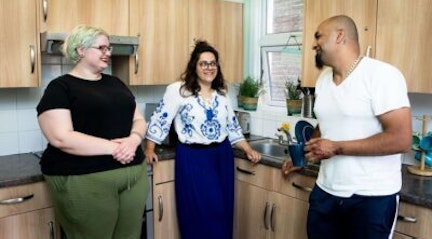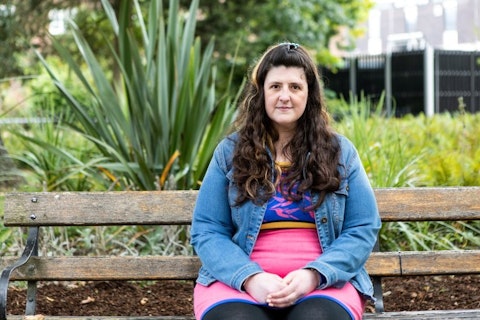Striving for more diversity and inclusion
-
News

We continue to work hard to be an inclusive organisation. Caroline Fraser, who joined Certitude in spring 2021 as Director of People and Organisational Development, says:
“We are extremely proud of the culturally diverse nature of our workforce – over half of the people who work for us are from Black and minority ethnic (BAME) backgrounds – but we are aware that to be a truly inclusive organisation we must ensure that people of every age, gender, cultural background, sexual orientation and those with disabilities, long term or progressive conditions, feel welcome at Certitude.”
This year Certitude has established networks designed to enable people to connect with one another, share experiences and identify ways to further increase equity across the organisation. So far, we have groups for people with disabilities, long term or progressive conditions, people from BAME backgrounds and people from LGBTQ+ communities and there are plans to expand further.
Helen Cairns and Maria Colaco lead our Disability Employee Network and are pleased to see the group grow in size and influence. They told us: “What makes us proud is seeing new faces at our group meetings. It means more people are reporting their disability and have the confidence to talk about what they need to maximise their talents. We have made progress as an organisation, including providing guidance on how to make our Values and Behaviour strategy more inclusive to neurodivergent colleagues and working with HR on expanding disability reporting categories.”
Our LGBTQ+ network has worked to raise its visibility with articles published on our intranet and has seen an increase in membership. Network lead, May Lee says:
“We’ve grown into a core group of colleagues who meet regularly to share ideas on how to make the world inside and outside of Certitude a better place for everyone who identifies as LGBTQ+. It’s a really supportive group and one member told me that it had made him feel ‘more confident about working at Certitude, his sexuality and mental health’. We are also seeing visible ‘allyship’ build across Certitude and are really pleased to see lots more colleagues including their preferred pronouns in their email signature.”
The BAME Network has also been growing steadily with a good cross section of staff at all levels represented at meetings. Lavern Dinah who leads the group says: “I am most proud of how members of the group are finding their voice and feeling more able to share their experiences and views, as well as network with each other. In a recent survey, a group member told us ‘I walk with my head high, able to express myself now. Before I was afraid to express myself, if I am not happy because of being judged.’ The survey also showed that members feel the communication, blogs and intranet page which has a range of useful resources have all been helpful in raising the profile of the group across the organisation.
“As the group becomes more comfortable, I believe they will use their voices to shape improvements that support our ambition to become a more inclusive organisation where everyone feels valued and heard.”
The network has worked with the recruitment team to look at ways to improve the recruitment process, so it is more transparent and fairer to BAME staff and to enhance opportunities for growth, development and progression.
Sharing experiences to reduce stigma
Giving a voice to people with lived experience is one way to reduce stigma and we are delighted that staff are beginning to feel comfortable sharing their experiences through blogs on our intranet.
Disability network co-chair and Senior Administrator, Maria Colaco, has Attention Deficit Hyperactivity Disorder (ADHD) and Asperger’s Syndrome (now Autistic Spectrum Disorder) and described how working at Certitude has helped her understand and accept herself. She says:
“Since joining Certitude, I have not only been able to learn a lot more about my conditions, but most importantly I have finally begun to accept them. My ADHD symptoms always made me feel different and it’s a relief to finally understand where they come from. It is liberating to learn about mine and other people’s neurodiversity and realise that I’m not alone. It’s also a privilege to have the confidence to share this knowledge with my work colleagues.”
Helen Cairns, wrote about the challenge of having a hidden disability – in her case, joint hypermobility syndrome and fibromyalgia. She says:
“Like many people, I don’t look traditionally disabled, so the use of my Blue Badge or my public transport badge is often met with cynicism and mistrust.”
